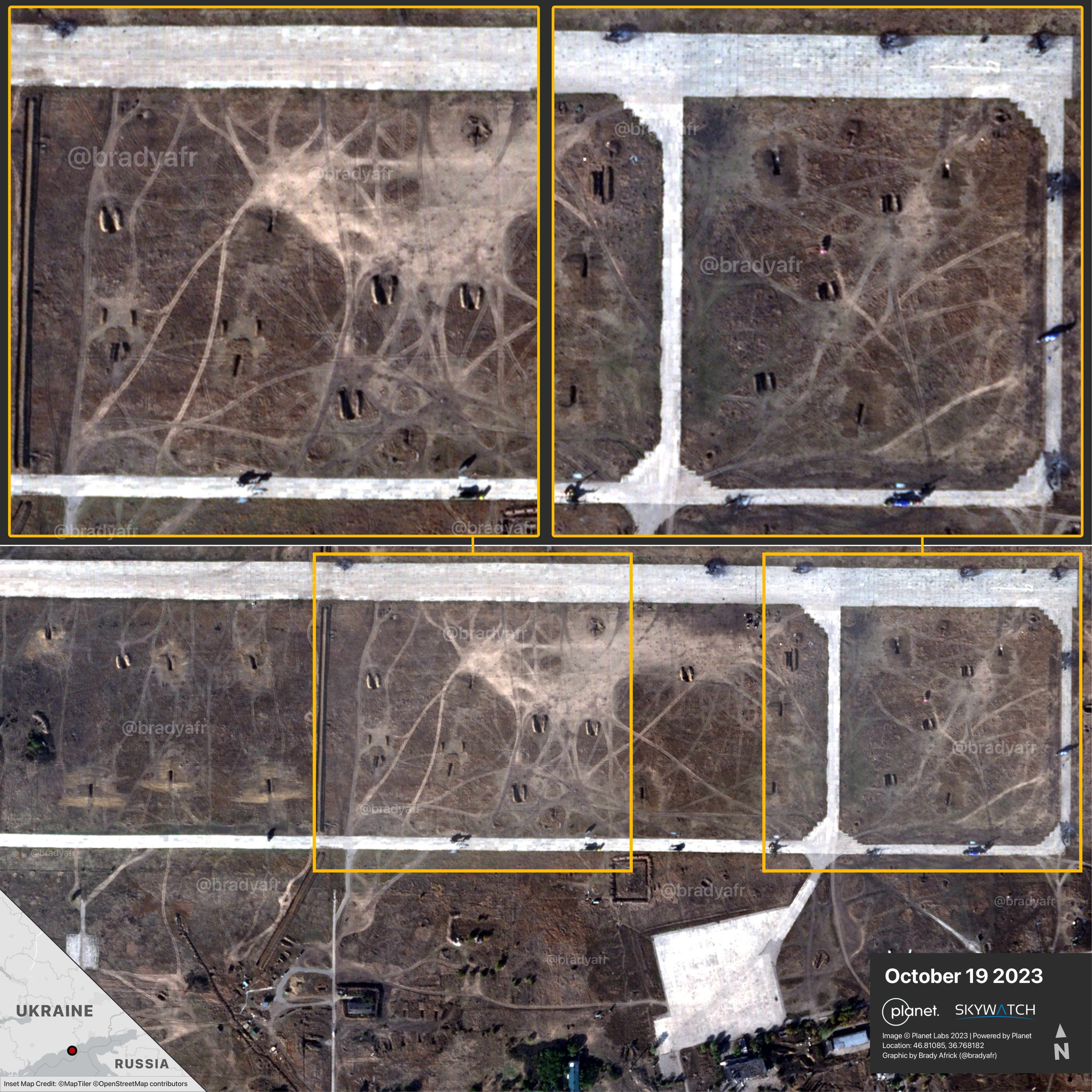British Defense Intelligence has suggested that Ukraine’s use of ATACMS on Russia’s Berdiansk airfield could have led to the loss of combat helicopters, which could adversely impact Russian forces’ capabilities.
Russia Goes All-Out Hypersonic! After MiG-31 Armed Kinzhal, Kremlin Puts Avangard Complex In Action Mode
In its intelligence update posted on X (formerly Twitter), UK Defense Intelligence said On October 17, following strikes on Russian military airfields in the occupied cities of Berdiansk and Luhansk, it is highly probable that “multiple” helicopters and air defense systems were rendered inoperable or destroyed.
The update mentioned that while the precise magnitude of the damage remains unverified, there is a strong likelihood that nine Russian military helicopters in Berdiansk and five in Luhansk were destroyed.
“Although the extent of damage is currently unconfirmed, it is likely nine Russian military helicopters at Berdiansk and five at Luhansk were destroyed, with Ukraine claiming to have used the US-provided long-range army tactical missiles (ATACMS) for the first time,” the UK MoD said.
Considering the inadequacy of Russian fixed-wing close air support experienced up to this point, it becomes evident that Russian defensive lines have grown increasingly dependent on rotary-wing aircraft for assistance in countering the advancing Ukrainian offensive.
Latest Defence Intelligence update on the situation in Ukraine – 20 October 2023.
Find out more about Defence Intelligence's use of language: https://t.co/ZwZC6CaiUn
🇺🇦 #StandWithUkraine 🇺🇦 pic.twitter.com/J3dLz99k2V
— Ministry of Defence 🇬🇧 (@DefenceHQ) October 20, 2023
The MoD noted that Berdyansk served as a key Forward Operating Base on the southern axis, playing a crucial role in providing logistical support as well as offensive and defensive capabilities.
“If confirmed, it is highly likely these losses will impact Russia’s ability to defend and conduct further offensive activity on this axis. Given the current strain on Russian military production, the confirmed loss of any airframes will be difficult to replace in the short to medium term,” the Ministry added.
The intelligence explained that this situation would likely place an even more substantial burden on Russian aircraft and combat-ready pilots. Furthermore, personnel and aircraft are probably experiencing significant fatigue from the intensive flying operations.
There exists a credible scenario in which this strike could compel Russia to, once more, move its operational bases and command and control centers to more distant positions from the front lines. This would, in turn, amplify the challenges faced by their logistics chains.
Details About The ATACMS Strike
On October 16, it was reported Ukraine utilized American-supplied ATACMS missiles against Russian forces for the first time, marking a significant enhancement in Ukraine’s long-range strike capabilities.
On October 17, Ukraine’s military announced that they had carried out precise strikes on enemy airfields and helicopters belonging to Russia’s army near the temporarily occupied Luhansk and Berdiansk using these missiles.
In an evening address on the same day, Ukrainian President Volodymyr Zelenskyy confirmed that Ukrainian forces deployed American-supplied ATACMS long-range missiles.
Later, US officials also confirmed that a “limited number” of these missiles had been covertly delivered to Ukraine. These ATACMS missiles will enable Ukraine to conduct strikes deeper into Russian-occupied territory.
The missile variants sent to Ukraine boast a range of approximately 100 miles, proving valuable to Ukraine’s Forces during a critical phase of their counteroffensive in the eastern and southern regions.

On October 18, the US-based Institute for the Study of War (ISW) highlighted that satellite imagery from October 17 indicates that the Ukrainian ATACMS strike on the Berdyansk airfield likely caused significant damage to Russian aircraft and airfield infrastructure. However, ISW has not yet been able to verify the exact extent of this damage.
Various open-source intelligence analysts have also shared satellite imagery of the Berdyansk airfield, highlighting at least seven areas with visible signs of fire and damage, where earlier satellite imagery had shown Russian helicopters. They have additionally observed that many helicopters have been relocated.
The Ukrainian military has asserted that Russian forces had Mi-28, Mi-24, and Ka-52 helicopters stationed at the airfield before the strike, suggesting that the damage may be more extensive than initially depicted in the preliminary satellite imagery.
Before ISW’s assessment, Ukrainian military sources also claimed that the Ukrainian strike destroyed nine helicopters, an anti-aircraft missile launcher, specialized equipment, ammunition depots, and damage to the runway infrastructure.
Meanwhile, Ukraine’s Foreign Minister, Dmytro Kuleba, announced that the United States has committed to regularly providing Ukraine with long-range ATACMS missiles.
- Contact the author at ashishmichel(at)gmail.com
- Follow EurAsian Times on Google News